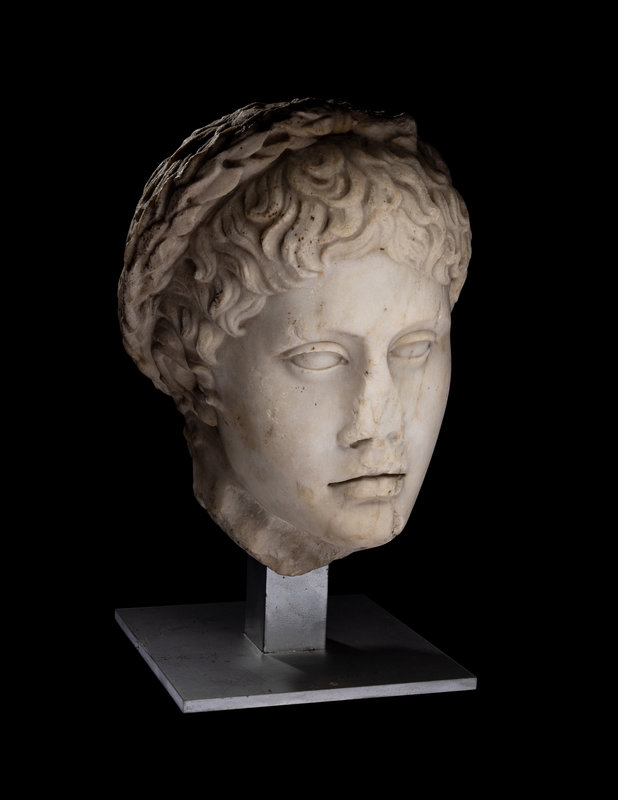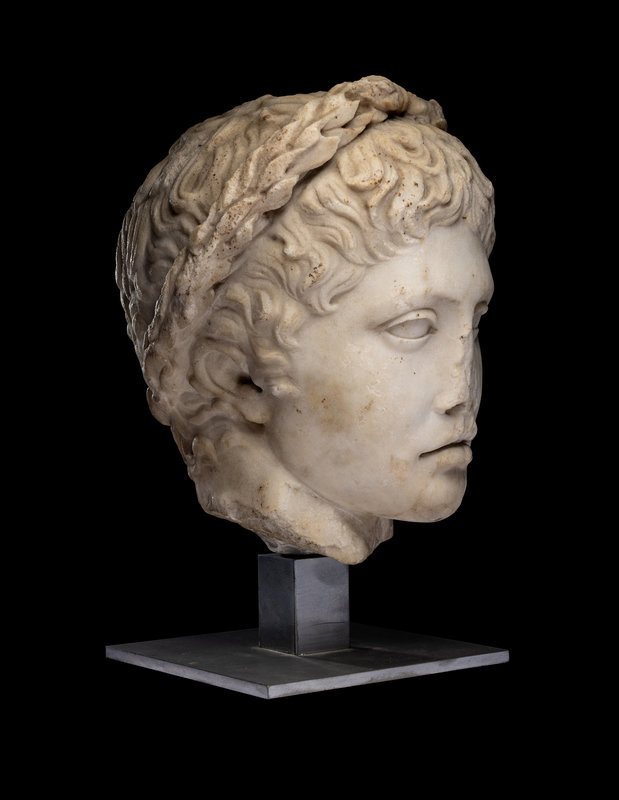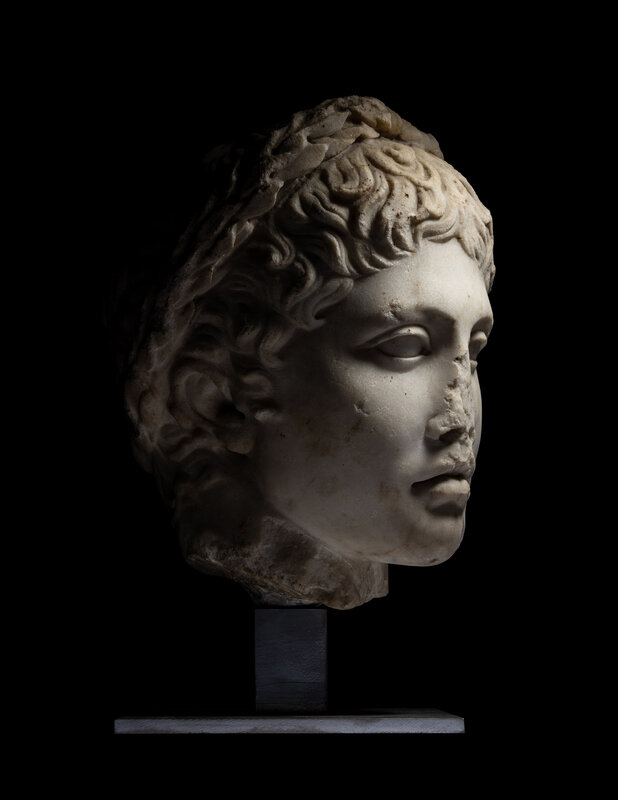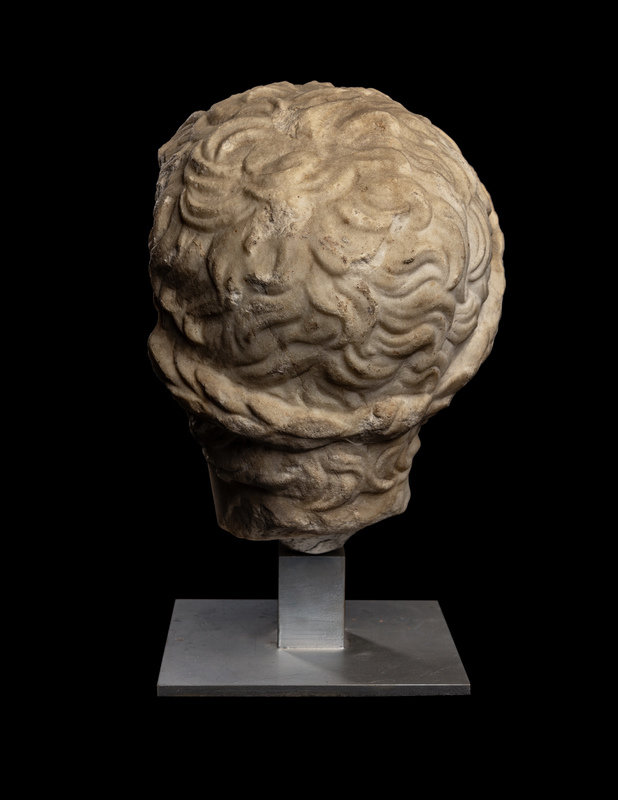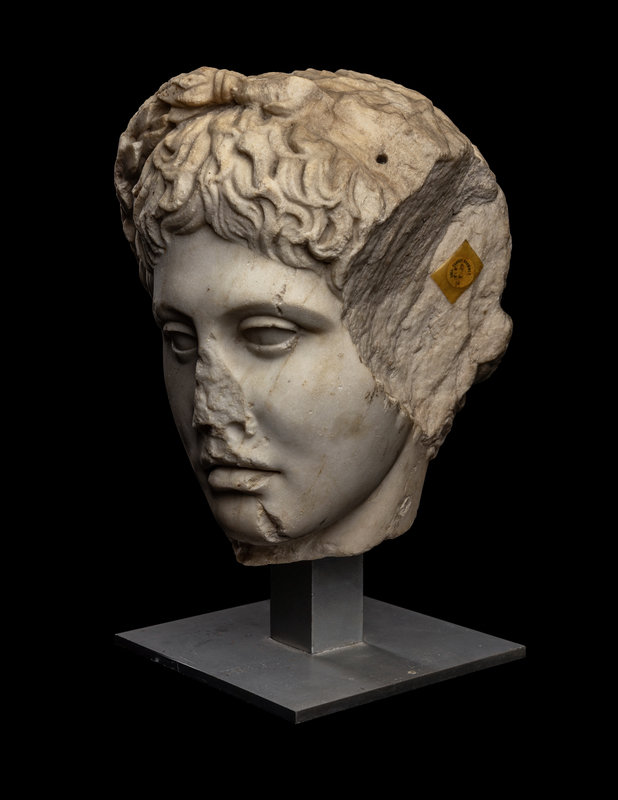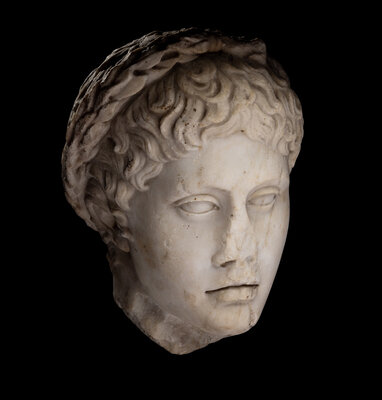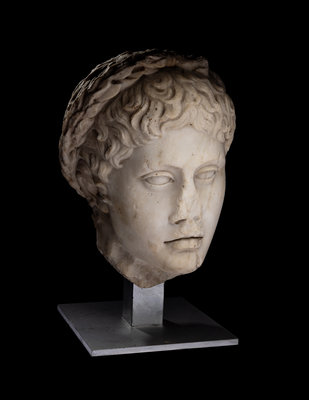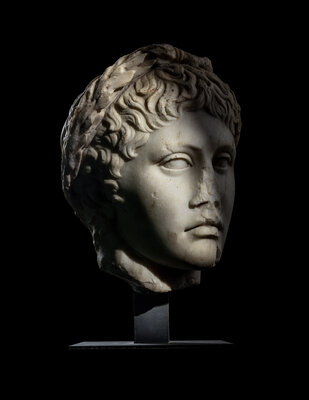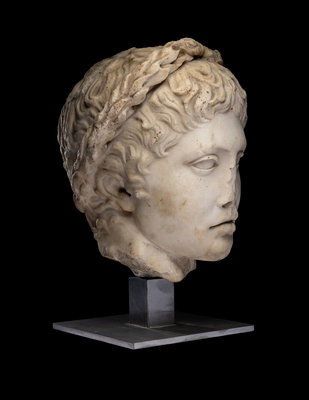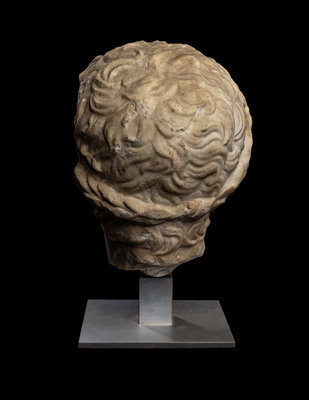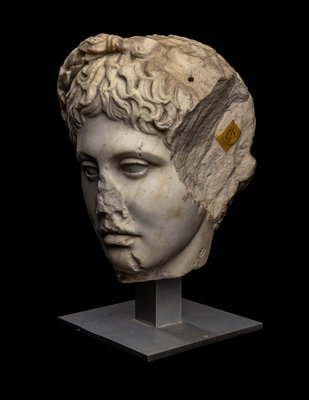Condition Report
Contact Information
Auction Specialist
Lot 18
A Roman Marble Head of a Youth Wearing a Laurel Wreath
Sale 1273 - Antiquities & Ancient Art: Including Property from the Brummer Collection
Dec 5, 2023
10:00AM CT
Live / Chicago
Own a similar item?
Estimate
$40,000 -
60,000
Price Realized
$504,000
Sold prices are inclusive of Buyer’s Premium
Lot Description
A Roman Marble Head of a Youth Wearing a Laurel Wreath
Circa Late 1st Century B.C.-2nd Century A.D.
Height 9 1/2 inches (24.13 cm).
Property from The Brummer Collection from Drs. John and Pat Laszlo, Atlanta, Georgia

